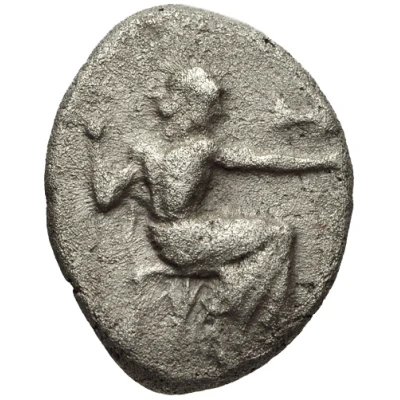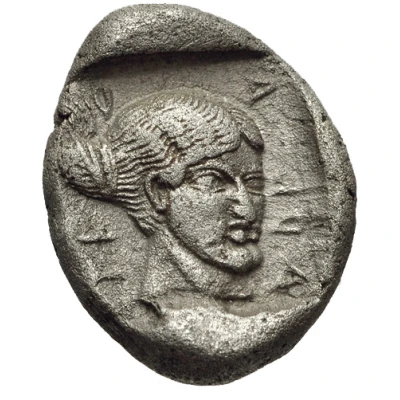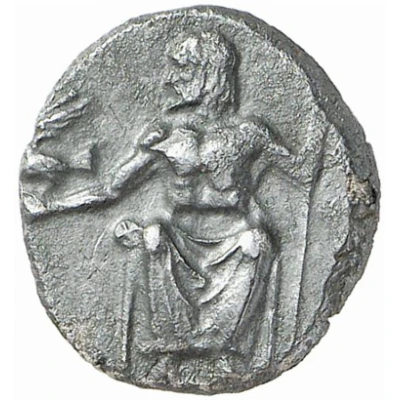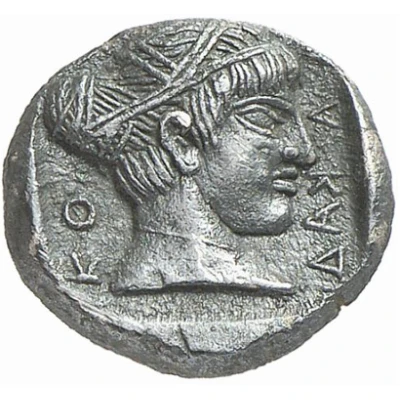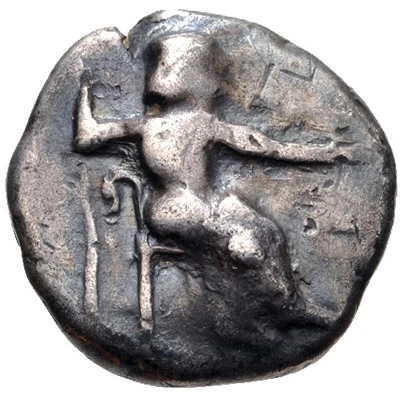
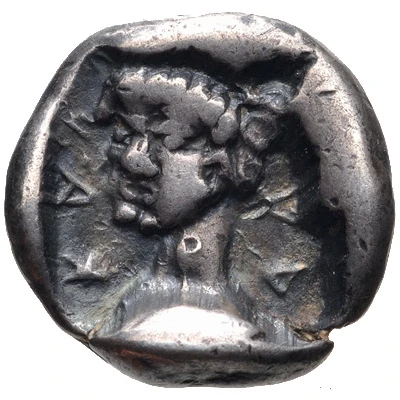

© Classical Numismatic Group, Inc.
Hemidrachm Tegea 460 BC - 450 BC
| Silver | 2.96 g | 14.0 mm |
| Issuer | Arcadian League (Arkadia) |
|---|---|
| Type | Standard circulation coin |
| Years | 460 BC - 450 BC |
| Value | Hemidrachm (½) |
| Currency | Drachm |
| Composition | Silver |
| Weight | 2.96 g |
| Diameter | 14.0 mm |
| Shape | Round (irregular) |
| Technique | Hammered, Incuse |
| Demonetized | Yes |
| Updated | 2024-10-09 |
| Numista | N#153146 |
|---|---|
| Rarity index | 100% |
Reverse
Head of Kallisto, wearing tainia, facing slightly left within incuse square
Script: Greek
Lettering:
ΑΡΚΑΔ
ΙΚΟΝ
Comment
BCD Peloponnesos –; BCD Peloponnesos II 2577.
Interesting fact
The Hemidrachm coin from Tegea, Arcadia, was used as a form of currency in ancient Greece during the 5th century BC. Its name "Hemidrachm" means "half drachma," indicating its value as half of a standard drachma coin. Despite being a smaller denomination, the Hemidrachm was still made of silver, which was a valuable and prestigious metal at the time. The coin's design featured an image of a stag on the obverse (front) side, which was a symbol of the Arcadian League, and the reverse (back) side featured a pattern of pellets and a crescent moon. The coin's weight of 2.96 grams was also a standard weight for coins of its denomination. Overall, the Hemidrachm coin was an important part of ancient Greek commerce and trade, and it remains a valuable collector's item for numismatists today.
